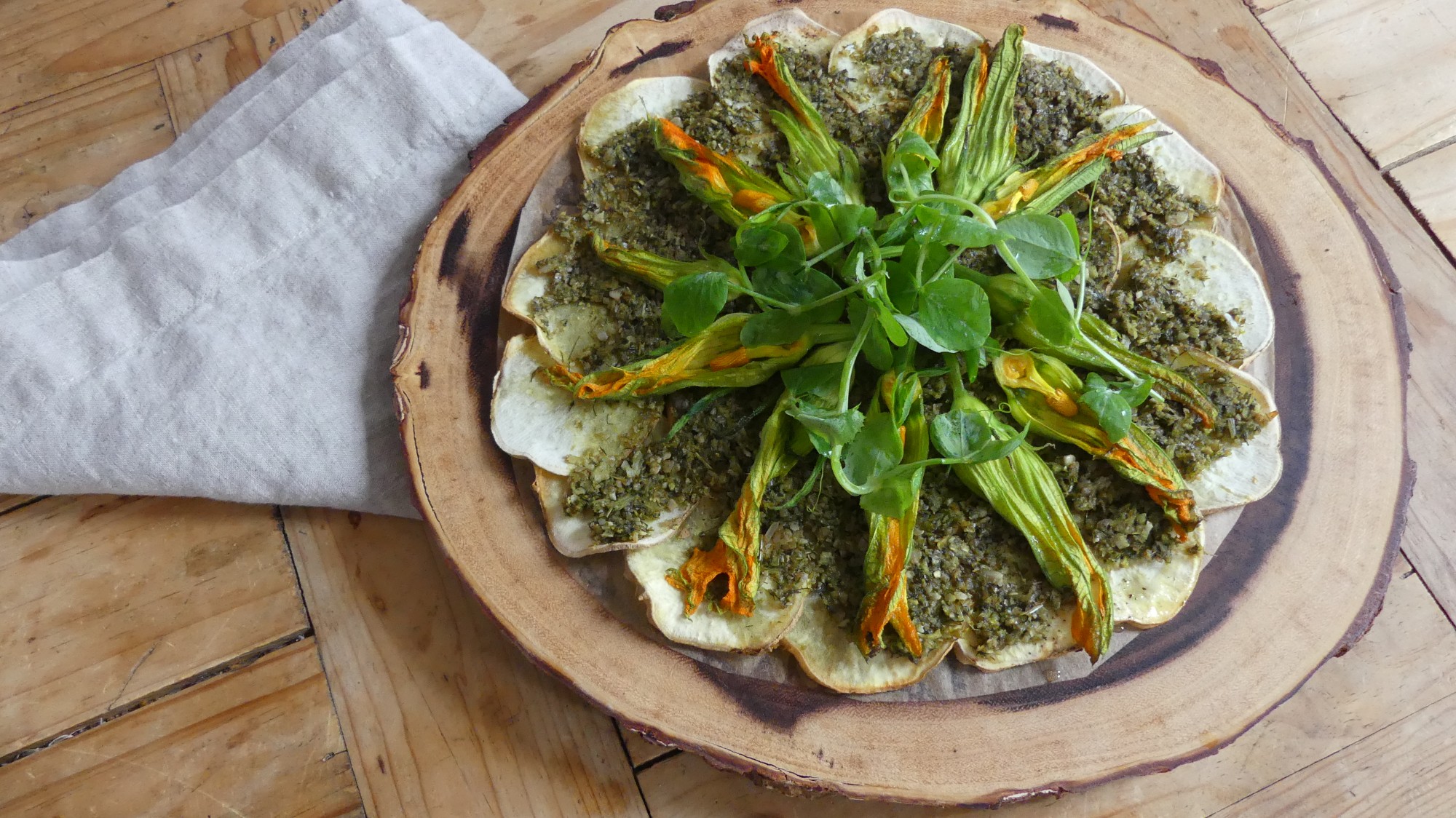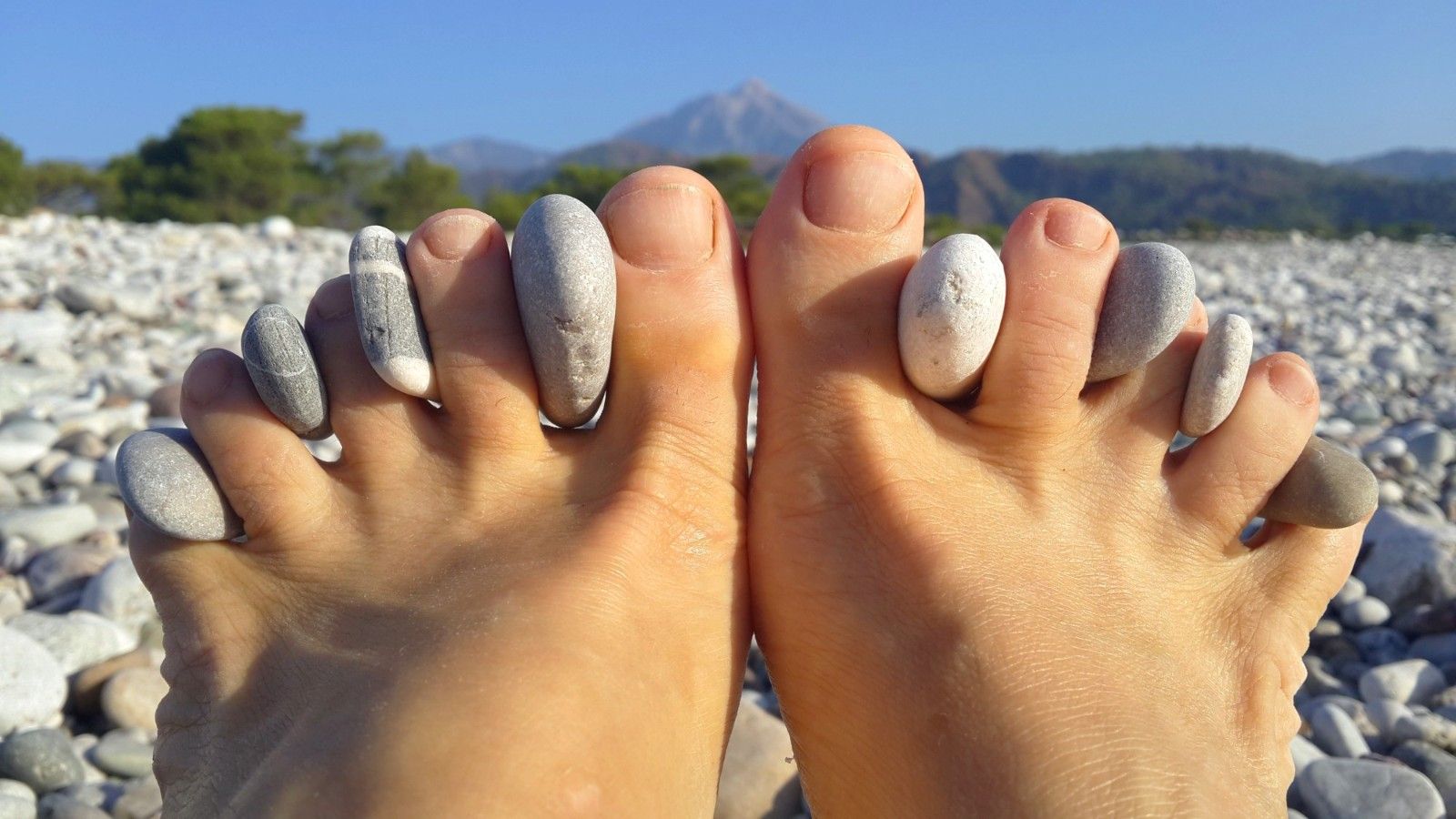What's Really Behind Gout?
How to heal gout with food
Gout is a condition marked by swollen, painful joints, accompanied by acute pain, most commonly in the big toe or foot. However, gout can also manifest as acute pain in the ankles, knees, elbows, fingers and/or hands. This can be a hard disease to diagnose in that the clinical picture is very similar to that of arthritis, leading some health professionals to believe that gout is actually a form of arthritis. However, if you look closely you will be able to see that there are significant differences between these two diseases.
In the case of rheumatoid arthritis (RA), a blood test will show the presence of antibodies, and in the case of osteoarthritis (OA), there is a noticeable deformation of the joints. When testing for gout, we usually see an excess of uric acid in the blood or an accumulation of uric acid crystals in the painful joint. In addition to this significant difference, RA and OA typically affect more than one joint anywhere in the body, while gout only affects the extremities, and usually only a singular joint (unless it has been neglected for quite some time), most often the big toe.

What causes gout?
Due to the fact that the kidneys are partially responsible for filtering out uric acid, many assume that the excess of uric acid in the blood, and its accumulation in the painful joints, is the result of a kidney problem. While this is partially true, if we look at the broader picture, we can see that the true culprit is an overtaxed liver.
When the liver is overloaded with dietary fat, as well as an accumulation of toxins, it fails to filter the blood properly, creating an influx of toxins into the bloodstream, which weighs heavily on the kidneys and lymphatic system which also acts as a filtration system. This build-up of toxins in the blood is what Anthony William calls ‘Dirty Blood Syndrome’. When this happens, uric acid, alongside additional toxins such as solvents, oxidation from heavy metals, pesticides, herbicides, air fresheners…, tend to settle in the extremities, such as the feet, toes, fingers, hands, and sometimes elbows. When this happens the venous draw from the extremities is not as good as it should be, meaning the veins are not able to fully pull up the “dirty blood”, thus leaving behind toxins that accumulate in the lower parts of the body - mostly in the joint of the big toe. Over time these toxins and crystals result in inflammation and pain.
Gout was once known as the “Rich Man’s Disease”, and has been recorded as far back as ancient Egypt. Throughout history, there are many people who suffered from gout due to a lavish lifestyle of fatty diets and beer that weighed heavily on the liver, such as King Henry VIII and Leonardo da Vinci. The only thing that has changed since those days, is that you no longer need to be wealthy to afford an excess of dietary animal protein.
An excess of dietary animal protein is just one reason we are seeing more cases of gout than previously. The other reason is the tremendous increase in the amount and types of toxins in our environment and foods, such as DDT, pesticides, herbicides, preservatives, toxic heavy metals, and more.
What is pseudogout (or “false gout”) and how is it connected to gout?
Pseudogout or Calcium Pyrophosphate Dihydrate Crystal Deposition Disease (CPPD) is a disease that is similar to both gout and arthritis. This disease is a form of arthritis where in addition to an active viral infection, there are also deposits of calcium pyrophosphate crystals in the joints, due to an overtaxed liver. So we will see a presence of antibodies in the blood, such as what is seen with arthritis, together with crystal deposits as occurs with gout.
Dietary recommendations for both gout and pseudogout are very similar, due to the fact that an overtaxed liver is the reason behind the presence of both uric acid, calcium pyrophosphate crystals, as well as other toxins in the blood.

Gout - Dietary recommendations
The first and most important step for anyone with gout is to drastically cut back on all types of animal protein. Animal protein is hard on the liver due to its high-fat content, especially when eaten in excess. Anyone with gout should switch to a 100% plant-based diet. However, if this is not feasible - some fish may be consumed, as long as it is in moderation. The chemical structure of fish protein and fat is very different than those found in other animal products, making it a bit easier for the liver to process.
With regard to plant-based protein, it’s important to be prudent with them as well. A certain amount of beans and nuts are okay, but remember that these types of protein in excess can also burden the liver. For those worried about not getting enough dietary protein, that is an impossibility. Every fruit and vegetable contains protein, whereas leafy greens contain a particularly large amount of bioavailable protein. For more on the subject, I suggest you read the Truth About Protein article at Medical Medium’s website.
The second most important thing you can do to help alleviate the pain is to increase your intake of fruits. Fruits, more than any other food helps to revive the liver. All fruits are helpful, but wild blueberries, cranberry juice, cherry juice, apples, kiwi, and melons are especially beneficial.

When seeking to improve liver health, lots of leafy greens such as lettuce, sprouts, kale, parsley, and cilantro, are also very important to add to your diet daily. Other vegetables you want to focus on include tomatoes, asparagus, sweet potatoes, winter squash, steamed or baked potatoes, brussels sprouts, artichoke, broccoli, and cauliflower.
Because gout is the result of ‘dirty blood’, you want to be sure to hydrate yourself as best as possible. Celery juice is a must, in that it helps to clean out and resuscitate the liver, clears out impurities in the kidneys, and increases bile strength and the production of hydrochloric acid, which improves digestion of both proteins and fats.
Additional drinks that are extremely helpful include fresh apple juice (you can mix it with celery juice) and cucumber juice. Two glasses of lemon water first thing in the morning and again in the evening also helps in flushing out toxins. An additional drink you may want to try is Aloe vera water to help detox properly while also helping to heal the liver.
As for supplements, you want to go easy when dealing with an overtaxed liver. A good quality B12 supplement that has both methylcobalamin and adenosylcobalamin is always helpful, as well as an ionic zinc supplement to help the liver detox gently and repair any damage.

In Summary
Our bodies are extremely wise, always looking out for us, trying to guide us to our next step of development. When we eat an excess of certain foods, our bodies will find a way to help us regain balance.
Consuming an excess of fats and animal protein is harmful to our bodies, as well as for the planet. Gout, that pain in the big toe, is our body’s way of trying to guide us back to a more balanced diet before more serious health conditions occur, a diet that is full of nutrients and healthy carbohydrates - just what our bodies need.
Information in this article is taken from Anthony William's website | Medical Medium
